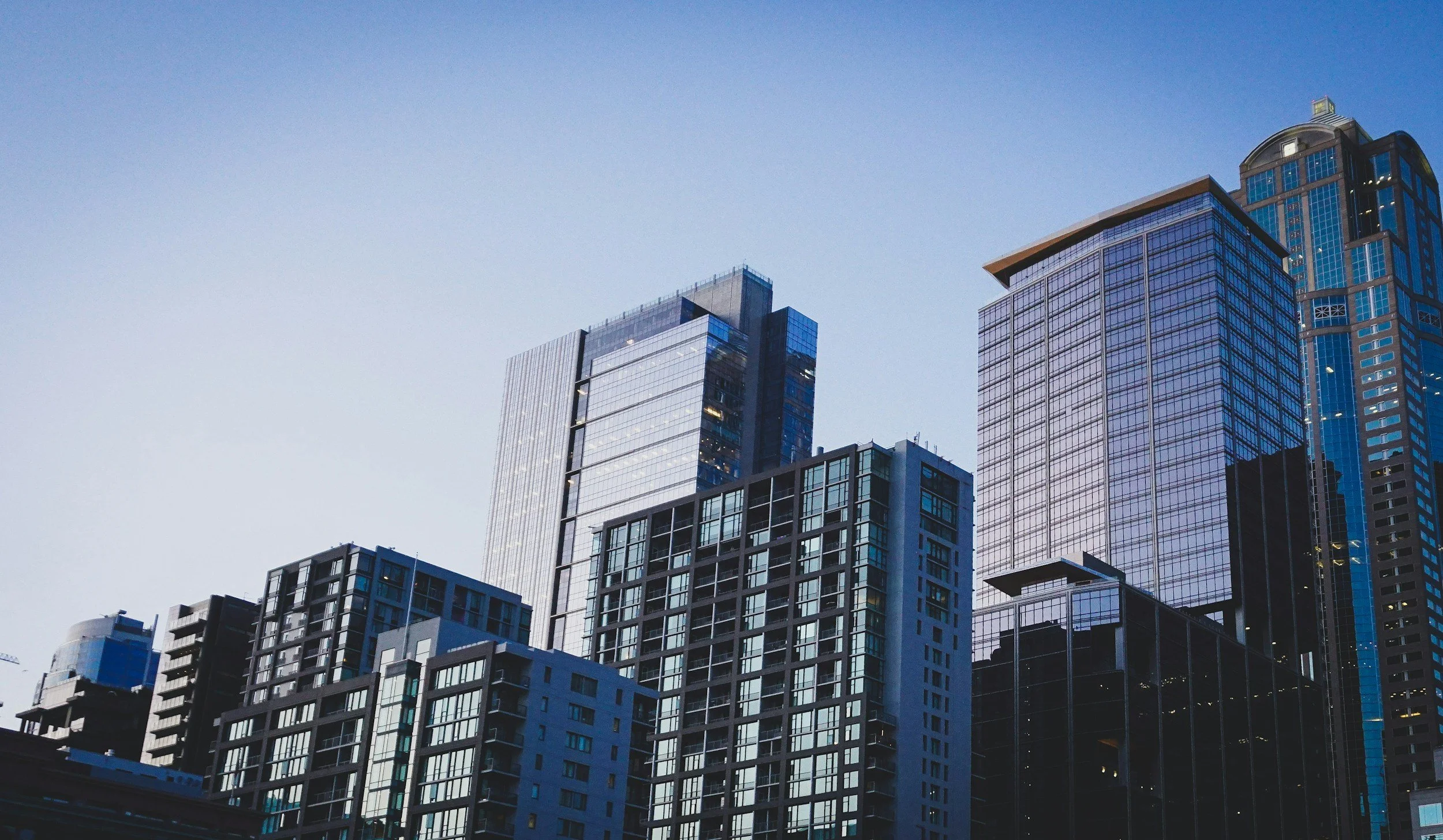The Long-Term Vision for Your CRE Portfolio: From Asset 1 to Legacy
“Most people think about their first deal. Few think about their last.”
That quote stuck with me the first time I heard it. It’s a reminder that in commercial real estate, the endgame matters just as much as your entry point. Too many investors pour all their energy into getting that first property across the finish line only to realize they never thought about where it was actually taking them.
Commercial real estate isn’t just about buying buildings. It’s about building something bigger than yourself: a business, a portfolio, a legacy. Without a clear vision, your investing journey can start to feel like spinning plates, one more deal, one more tenant, one more issue to solve. But with the right long-term strategy, every property becomes a stepping stone toward financial freedom, generational wealth, and impact.
This post isn’t about your next deal. It’s about your last one, the one that makes the whole journey worth it. Whether you’re on property one or property ten, this is your guide to thinking bigger and building a CRE portfolio that lasts.
Starting with Asset #1: Strategy over Emotion
Every commercial real estate portfolio starts with one deal. But how you choose that first deal can define the trajectory of your entire portfolio. For most first-time investors, the temptation is to swing for the fences, go after the flashiest asset, the biggest return, or the trendiest market. But that’s not how long-term portfolios are built.
If your goal is to scale, your first acquisition should serve as your training ground not your retirement plan.
Think of it like this: your first property is where you test your systems. It’s where you get used to sourcing deals, working with lenders, managing contractors, and collecting rent checks. It’s not where you try to 3x your money in 18 months or land a deal with 200 tenants and a multi-layered lease structure.
One of the most common mistakes I see is new investors falling in love with a deal instead of staying aligned with their strategy. A good deal can still be the wrong deal if it doesn’t move you toward your long-term vision.
Ask yourself:
Will this property give me experience in a product type I want to master?
Can I finance it without overleveraging myself?
Does it introduce me to brokers, lenders, and contractors I want on my long-term team?
A mediocre deal with a clean path forward can be far more powerful than a “home run” that burns you out or traps your capital. Start with strategic simplicity, not emotional complexity.
“Your first deal is about learning the playbook. Don’t try to win the Super Bowl yet.”
From Operator to Owner: Building the systems Early
One of the most transformative mindset shifts in commercial real estate is going from operator to owner.
Early in your journey, it’s natural to be hands-on. You’re walking properties, calling brokers, managing contractors, maybe even drafting leases yourself. But if you want a portfolio that scales and eventually frees up your time, you have to build it like a business, not a side hustle.
That shift doesn’t start on your fifth deal. It starts with your first.
Begin by creating repeatable systems:
Deal sourcing: Where do you consistently find new opportunities? Broker relationships? Direct-to-seller letters? Online platforms?
Underwriting process: Do you have a model or checklist to vet deals quickly and consistently?
Property management workflows: Whether you self-manage or outsource, how are you tracking tenant issues, lease renewals, and maintenance?
Financing playbook: Who are your go-to lenders? Do you know your typical loan-to-value target and DSCR thresholds?
Even if you’re doing all these tasks manually today, document the process as if you’ll hire someone to take them over tomorrow. That’s how you move from a job to an enterprise.
Just like you wouldn’t build a house without blueprints, don’t build a portfolio without systems.
And the secret weapon? The right team.
Start forming relationships early with brokers who understand your niche, lenders who support your vision, and contractors who can scale with you. Your team isn’t just a support system; it’s an accelerator. The more you delegate effectively, the faster you grow.
“You’re not just buying buildings. You’re building a company.”
Scaling Smart: Avoiding Portfolio Bloat
Growth for the sake of growth is a trap. In commercial real estate, it’s easy to get caught up in the momentum: more properties, more units, more square footage. But if each deal isn’t aligned with your long-term vision, you’re not building a portfolio, you’re just stacking problems.
A bloated portfolio might look impressive on paper, but it often comes with:
Fragmented markets and management headaches
Low-performing assets that drain time and capital
Complex financing structures that limit flexibility
Unclear exit strategies
The most successful CRE investors don’t aim for size. They aim for fit.
Before acquiring your next deal, ask:
Does this asset move me closer to my income and equity goals?
Will it complement or complicate my existing operations?
Does it fit within a market or asset class I understand and want to double down on?
You don’t need 100 properties. You need the right 5, 10, or 15. Each one should serve a clear purpose whether it’s consistent cash flow, tax advantages, long-term appreciation, or strategic diversification.
This is where having clear decision filters becomes critical:
Cash flow vs. equity: Are you buying for monthly income or long-term gain?
Management intensity: Are you building for simplicity or do you have systems to handle complex tenants?
Exit optionality: Can you sell, refi, or reposition this asset easily down the road?
One investor’s trophy asset might be another’s trap. Know your personal constraints - capital, bandwidth, risk tolerance, and scale accordingly.
“Smart scaling isn’t about saying yes to more. It’s about saying no to the wrong deals.”
Repositioning and Value Creation
Once your foundation is solid and your portfolio starts to grow, the next phase is value creation - learning how to force appreciation instead of waiting for the market to do it for you.
This is where long-term wealth in CRE is truly built.
Repositioning a property isn’t just about renovations. It’s about identifying the gap between what the asset is today and what it could be with the right vision, execution, and team.
Some repositioning plays include:
Upgrading finishes or curb appeal to attract stronger tenants
Re-tenanting at higher rates after leases roll
Converting underutilized space into leasable square footage
Subdividing larger suites into micro-units to increase rent per square foot
Changing the use entirely—like turning an office into flex space or a vacant warehouse into a car wash
Each improvement compounds the value of your portfolio not just in terms of appraised value, but in lender confidence, investor equity, and your own experience.
One of the best parts about commercial real estate is the ability to manufacture appreciation. Unlike residential, which largely follows comps, CRE is valued based on income. That means if you increase net operating income, you increase the value regardless of what the market is doing.
This also opens the door for smart refinancing:
Extract capital without selling
Reduce your basis while retaining upside
Use tax-efficient structures like cash-out refis or cost segregation
Just don’t fall into the trap of improving a property just for the sake of it. Every dollar invested in repositioning should tie back to your overall portfolio thesis. You’re not just fixing up properties. You’re shaping the future value of your business.
“Legacy isn’t just what you buy. It’s what you build, improve, and leave better.”
Planning the Exit (Even If It’s 20 Years Away)
Most investors focus on the acquisition, the thrill of the deal, the hunt for yield, the closing table win. But the savviest commercial real estate operators begin with the exit in mind.
Why?
Because the value of your portfolio isn’t just in what it earns now, it’s in how flexible, transferable, and strategic it is when you eventually decide to step back.
This doesn’t mean you need to know the exact day or year you’ll exit. But you should understand the options available to you, and how to structure your deals accordingly.
Some key considerations:
Will you sell properties outright, refi them for income, or pass them down to heirs?
What ownership structures, LLCs, LPs, trusts, will make that transition smooth and tax-efficient?
Are you building an entity that could be sold one day (like a REIT, fund, or management company)?
Legacy isn’t just about keeping assets in the family. It’s about making intentional choices that give you the freedom to sell, gift, or step away without scrambling.
Some investors hold properties in revocable trusts or family LLCs to simplify succession planning. Others create holding companies with different tiers of ownership for children or charitable foundations. A few even plan structured sales to their own employees over time.
The point isn’t to overcomplicate. It’s to plan early, while you still have leverage and options.
Think about this: If your portfolio was worth $10 million today, how would you exit it?
Would you sell half and keep the rest for income?
Would you set up a family trust to distribute the income to your kids?
Would you 1031 exchange into one larger, easier-to-manage asset?
These are not questions for someday. They’re questions for now while you’re still building.
“Your exit strategy doesn’t start at the end. It’s baked into every acquisition.”
Community and Impact
Most commercial real estate investors start with financial goals: passive income, equity growth, tax advantages. But the further you go, the more you realize what you’re really building is influence.
Your portfolio has the power to shape neighborhoods, support local businesses, and create meaningful change.
That’s impact.
As you scale, you’ll face decisions that go beyond spreadsheets:
Do you prioritize local tenants over national chains?
Do you redevelop a blighted property or leave it vacant?
Do you offer favorable terms to nonprofits or mission-aligned organizations?
These decisions don’t always offer the highest short-term ROI, but they build something far more durable: reputation, relationships, and legacy.
Your real estate becomes part of the community fabric. It creates jobs. It provides safe, functional space for people to work, shop, and gather. It signals to others, especially in overlooked or underserved markets, that there’s value here, and someone is willing to invest in it.
And often, those are the investments that outperform in the long run.
You also have the opportunity to mentor other investors, bring your kids into the business, and be a resource for your city. That’s where CRE goes from wealth building to life building.
So yes, your first priority is return. But over time, your greatest ROI might be the one you can’t measure on a balance sheet.
Conclusion: Reverse-Engineer Your Legacy
Building a commercial real estate portfolio isn’t just about acquiring properties. It’s about creating something durable: financially, operationally, and emotionally. Something that outlasts the first deal, the first mistake, the first market cycle.
The investors who build legacies don’t rush into deals. They move with intention. They start with a clear vision of the life they want, the income they need, and the impact they hope to leave. Then they reverse-engineer every acquisition to align with that.
So, whether you’re still looking for your first asset or sitting on five, ask yourself:
What kind of business do I want this to become?
How many hours per week do I want to work in 10 years?
What kind of values do I want my portfolio to reflect?
Who do I want to benefit from this long after I’m gone?
This isn't just real estate. It’s a blueprint for time freedom, legacy wealth, and impact.
If you want to get clear on your direction, here’s a quick exercise:
Sketch out your “Five-Property Vision” - what do those properties look like, what do they cash flow, who manages them, and what role do you play?
Then, write a one-paragraph “Legacy Statement” - what do you want your portfolio to stand for and accomplish over the next 20 years?
Because when your vision is that clear, every deal becomes a brick in the foundation, not just a bet on the market.
“The best portfolios aren’t built in a rush. They’re built with intention.”
For those interested in delving deeper into commercial real estate investing, check out our course offerings. The courses provide in-depth insights, real-world case studies, and practical strategies to help you navigate the complexities of commercial real estate and achieve success in your ventures. Whether you're a seasoned investor or just starting in the world of commercial real estate, there's always more to learn. Equip yourself with the knowledge and tools you need to thrive in commercial real estate!











If you’ve been investing for a while, you know the grind.
You’ve closed deals, managed contractors, worked through leases, and seen both wins and setbacks. Maybe you’ve owned single-family rentals, a few duplexes, or even some small commercial buildings. You understand the fundamentals: how to run numbers, navigate debt, and keep properties occupied.
But here’s a question that hits at a different level: are your investments giving you leverage or just more responsibility?
As your portfolio grows, so does the complexity. More tenants often mean more phone calls. Bigger buildings bring additional systems, staff, and liability. And while your equity might be growing on paper, your time can get stretched thin across too many directions.
That’s why more experienced investors are quietly shifting toward asset classes that offer something rare in commercial real estate: simplicity that still delivers strong returns.
Two of the most overlooked categories in this space are flex industrial and industrial outdoor storage (IOS).
They’re not flashy. You won’t find them in luxury investor decks or high-end brochures. But these properties produce solid returns, attract long-term tenants, and are surprisingly light on operational headaches. Best of all, they give seasoned investors a way to keep growing without being consumed by the demands of their portfolio.
In this post, we’ll walk through:
What makes flex and IOS so attractive
The numbers behind why they work
How they fit into a growing portfolio
And why they might be the most strategic asset class you haven’t explored yet
This is not about going bigger for the sake of scale. It’s about going smarter.
Because the goal is not more units. It’s more freedom.